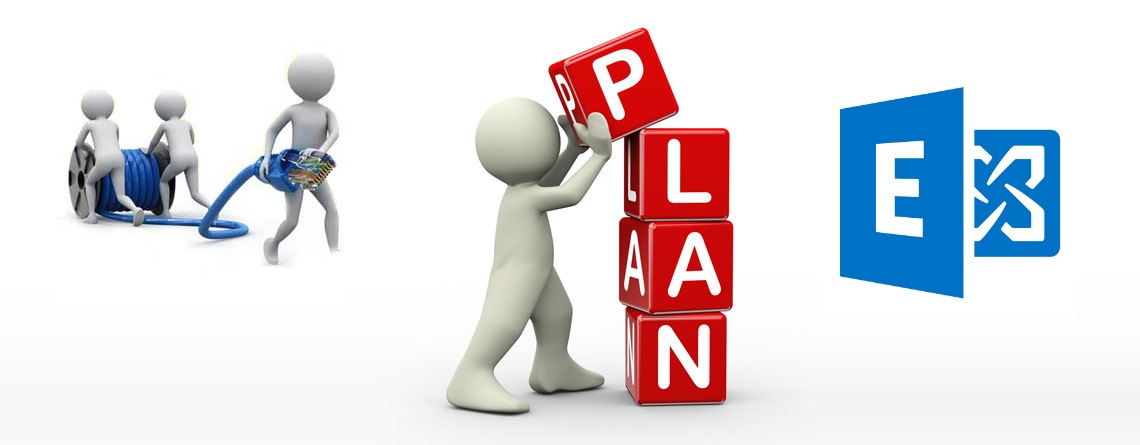Planning For Installation Of Exchange Server In A DAG
Anuraag Singh |
Modified: August 6, 2016 | DAG, Exchange Server 2007, Exchange Server 2010, Exchange Server 2013, Exchange Server 2016 | 5 Minutes Reading
In this article we are going to discuss about planning for installation of exchange server in a DAG. This article is applicable for any version of exchange server like Exchange 2010/2013/2016. Exchange Server is being installed in a DAG for increasing the Server Availability, Data Availability etc. There are many other benefits too which we are going to discuss in this article.
Data availability always works for execution of any process in Exchange Server. There is a basic component of Exchange Server called DAG (Data Availability Group) which is responsible for high data availability and automatic database recovery. DAG supports up to 16 Exchange mailboxes that contains copies of databases.


The data present in one mailbox is the replica of database present in other members of the same DAG. It also provides recovery of database present in Exchange server from the failures.
In addition, there is also an internal component called Active Manager that is present in every Mailbox Server and it manages all failures within the DAG. This article basically emphasizes on basic requirements and Planning for installation of Exchange Server in a DAG.
Planning needed for High Availability in Exchange Server using DAG
When the Administrator is planning for installation of Exchange Server in a DAG, it is very crucial to identify the business and architectural requirements to position Data Availability Group and site resilience.
General Requirements
There are some basic requirements for using Exchange Server with DAG that are as follows:
- Firstly, domain name system should be in running state and must accept the dynamic updates. If it does not accept the dynamic updates then admin may have to create a new DNS for the Exchange server. If the newly created DNS will accept the dynamic updates the Exchange Server will also work properly.
- The mailbox servers present in DAG must be a member of same domain.
- DAG does not support directory servers.
- In addition, the naming of DAG must be valid and unique with 15 characters or less.
Hardware Requirements
There are no specific hardware requirements for DAG but the servers must meet the Exchange 2016 system requirements such as:
- Windows 2008 or above Domain functional level
- IPv6 should be enabled along with IPv4
- Should use Windows 2012 R2
- Mailbox memory should be 8GB minimum
- Installation of latest .net framework
Software Requirements
All the members of DAG must be run on same operating system. The Exchange 2016 is operable with Windows Server 2008 R2, Windows server 2012 R2, Windows Server 2012. DAG uses Windows Failover Clustering technology therefore, it requires Windows Server 2008 R2 Enterprise or Datacentre version.
Network Requirements
To fulfil the Network requirements of DAG there are certain points that admin should keep in mind while planning for installation of exchange server in a DAG:
- All DAG and its member should use single MAPI network.
- Each member of DAG should not have more than one MAPI network.
- Each network in each DAG member should have its own subnet.
- Each DAG member should able to communicate with other DAG member’s MAPI network.
- DAG supports IPv4 and IPv6. DAG uses IPv6 when IPv4 is also in use. It does not support IPv6 in isolation.
- DAG must should support round trip network latency not more than 500 milliseconds between its’ each member.
- There should be at least one network adapter present in each member of DAG that facilitates communication between them.
- The members of DAG running on Windows Server 2008 R2 or Windows Server 2012 must have minimum one IP address on the MAPI network.
Witness Server Requirement
The witness server is required when there is even number of DAG members to achieve and maintain the quorum. It is not necessary that the version of Operating System and Witness server is similar.
Certification Requirement
When the administrator is deploying the DAG in single Datacentre then there is no need of certification. However, while extending the DAG across multiple datacentres, certification is required. The design of certification depends on clients and applications in use.
Planning for Site Resilience
The DAG members consist of copies of mailboxes database in order to provide high availability and site resilience. The planning phase of DAG is very important for administrators to identify the requirements and if the multiple site solution will be an active/passive or active/active configuration for the execution for site resilience. The planning of site resilience should be in such manner, that it takes minimum time to activate the second Datacentre.
Admin should consider the following points while planning for site resilience:
Admin should consider the following points while planning for site resilience:
- The security level agreement goals should be well-documented and well understood.
- The capacity of second datacentre must be sufficient to host the combined users of both the datacentres.
- The second datacentre must have all services of that are present in primary datacentre.
- For datacentre switchover, the proper network configuration is required.
Conclusion:
These are some pre-requirements that user must consider when they are planning for Installation of Exchange Server in a DAG. By considering these important prerequisites user can smoothly use Data Availability Group to enhance the data availability in any organisation.
